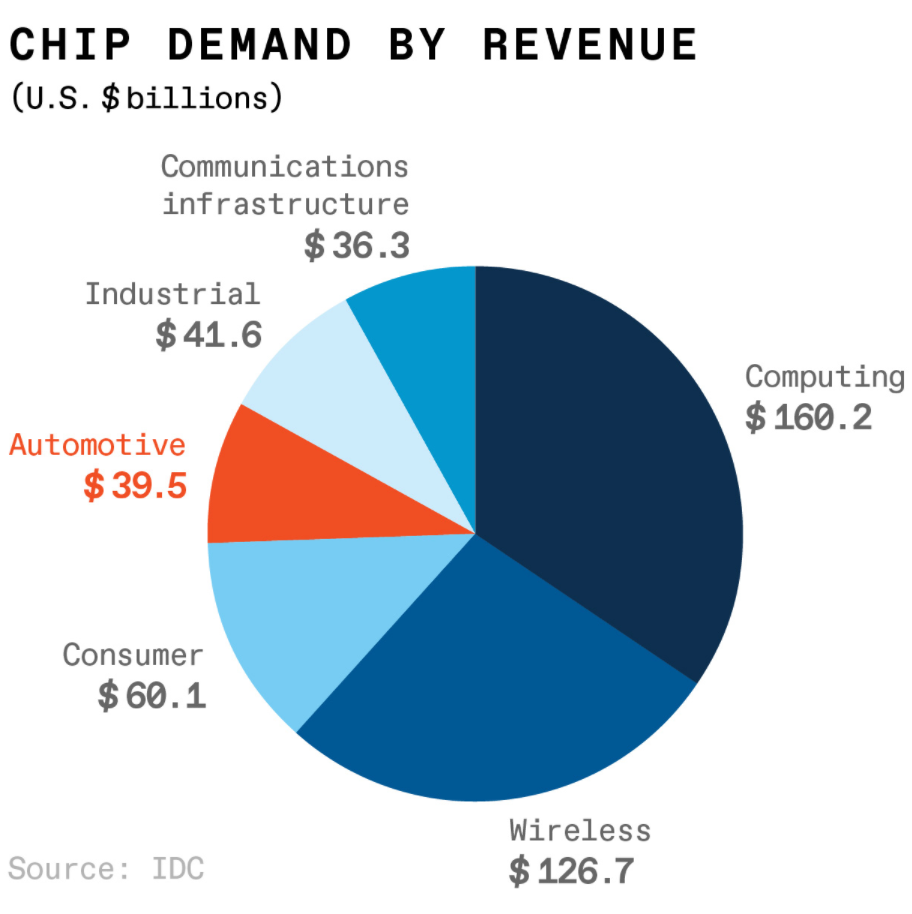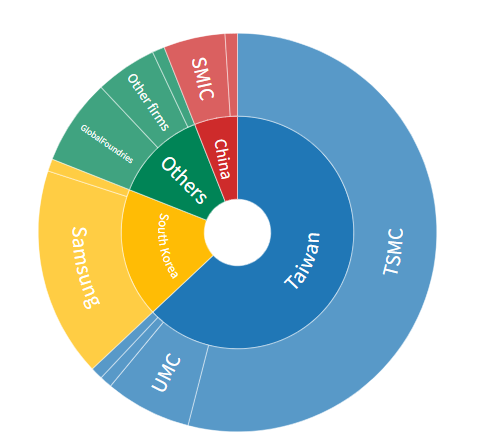Graphics Processing Units (GPUs) serve as one of the only constants within the technology of the now, and that of the future.
But what is so special about GPUs, and why have shortages wrought havoc on various international supply chains, including automobiles and consumer electronics?
Before getting into the importance of the GPU in our modern economy, we need to first look at how it is integrated within computing systems.
CPU and GPU are often mentioned synonymously, given their synchronous roles in creating computer power.
CPU has been the backbone of all computer systems over the past 40 years, serving essentially as the brain of the system, taking in raw instructions and spitting out information to enable the rest of the computer to run.
GPU was previously only used for creating images for computer graphics, but it has recently become increasingly more important given its ability to execute multiple processes at once.
If the CPU is the brain, then the GPU would be the body – executing any tasks/processes instructed by the CPU.
As the tasks we perform become increasingly more complex, the ability of computers to process multiple tasks at once has taken on greater importance, where previously we may have only used computing power to render an image or play video games, but now use it to power autonomous vehicles, AI and various other innovative pieces of technology.
It is therefore evident that without expanding our supply of GPUs, technological innovations will be slowed down, and so will our constant pursuit in increasing the standards of living of all around the world.
Where is it Used?
GPUs may not be mentioned that frequently in the news, however they are a form of a semiconductor, which most readers have likely heard about in relation to the current global shortage.
GPUs are currently used in a variety of industries, including computing, communications (5G), wireless and automotive.
A good example of the value GPUs have been able to add is through looking at the automotive industry.
If you bought a car 20 years ago, its features were fairly standard – a motor, indicators, headlights, speedometer, potentially a radio or CD player, and other things we take for granted.
However, cars now have a multitude of additional features which make our lives easier, including adaptive headlights, lane departure warning systems, blind spot warnings, parking assistance and heads up display to name a few.
For context, a BMW 7 Series has over a hundred digital systems to perform similar functions to those listed above.
All of these innovations were made possible by the development of GPUs, enabling cars to have a basic, but intuitive brain of their own.
The importance of GPUs in car manufacturing was made evident throughout the COVID-19 pandemic, where new car production had to be halted at times, and still remains well below pre COVID levels due to chip shortages.
This eventually played a role in creating inflation – the most dominant investment narrative of the year to date.
This occurred through increases in demand for used cars, driven partially by the lack of supply of new cars.
If it hasn’t already been apparent, it should be clear that despite being small in stature, GPUs play a large role in the functioning of our modern economy, and their importance is only growing.

The Future Lies in GPUs
GPUs serve a vital role within one of the technologies which will shape our future – Artificial Intelligence.
The core value of AI lies in its ability to enable human capabilities of understanding, reasoning, planning, communication and perception through analysing data sets.
This may be as simple as Google Maps calculating how long your drive home will take (based on data from other cars), or as complex as detecting whether a patient may have cancer (based on previous results and patient specific information).
Given their ability to process multiple pieces of information at once, and at speed, GPUs have become vital in AI technology – both in the fields of machine and deep learning.
It is inevitable that AI will be integrated within most, if not all, industries around the world in some form, however given the nascent nature of the industry, the thematic is difficult to integrate within investment portfolios.
This is where GPUs come in – if investors elect to gain exposure to oil when they expect economic activity to pick up, then the same logic can be applied to GPUs and AI.
Remember – the groups who benefitted the most from gold rushes weren’t the gold miners, but instead the entrepreneurs which sold supplies and provided housing.
Leading chip makers like NVIDIA (NASDAQ: NVDA) and Intel (NASDAQ: INTC) offer listed and liquid exposures to this thematic, both being heavily integrated within the autonomous car and AI industry.
These chip makers create other technologies using semiconductors, including microprocessors, memory chips – however the investment thesis remain the same.
For exposures down the supply chain, investors can elect to invest into Taiwan Semiconductors (NYSE: TSM), who have over 50% market share in in the production of semi-conductors – producing chips for the likes of Apple, Tesla and Alibaba.
TSMC is able to have such market dominance due to the complexity of production – each chip which goes into your computer takes up to 3 months, and 700 steps to produce. High quality chips require dustless rooms and for workers to wear multiple layers of protective gear – given that even a dust could make a chip obsolete.
Due to the high barriers of entry into the semiconductor industry, almost all chip designers find it more cost effective to outsource production to TSMC. As a result, TSMC is relatively shielded from competition – the main question will be whether it will be able to expand production, whilst still remaining as profitable as it currently is.
We haven’t delved that deeply into AI, but if you are curious, it is a topic we have touched on in the past.
Geopolitical Implications
We’ve established in this note that GPUs carry great importance in current and future economies, however the centralisation of production within a few countries and companies (due to the difficulty of production) poses certain geopolitical implications.
TSMC has been able to command such dominance over the market due to the government support it has received since its inception in 1987, and the business model it chose.
Prior to the creation of TSMC, chip designers created their own chips, with TSMC the first to come along with a pure play production business model.
Though leveraging economies of scale and being able to focus solely on the creation of semiconductors, TSMC was able to develop a significant advantage, with most chip designers eventually outsourcing their production to them.
Semiconductor Manufacturers by Market Share

Source: Trendforce, CNBC
However, their dominance does not come without consequences for geopolitical landscapes, with their vital importance to the global economy set to drive global power dynamics, particularly within US-China relations.
To date, both China and the US rely heavily on Taiwan to produce the chips which power their economies.
Relations between the two countries are as frosty as ever, with restrictions in GPU supply likely to play a role in future diplomatic relations.
Whilst efforts have been made by multiple governments to assist semiconductor industries within their own countries, with South Korea committing USD$450bn over 10 years and the US pushing legislation worth USD$52bn, no material steps have been made towards usurping the market share held by Taiwan.
A GPU World
The importance of GPUs is undoubted, however, the question for investors will be the ability to pick the right exposures.
Levels of supply will be determined by the ability of producers to increase capacity at a profitable margin, which is no tall order given the notoriously complex production processes.
Support at the government level will play a big role in this expansion of supply, with the need to have a domestic semiconductor industry carrying more and more importance as we develop technology dependant on it.
Levels of demand will be driven by the ability of chip designers to produce increasingly higher quality and more efficient chips.
Regardless of what happens, consideration of the inclusion of GPU producers is essential for those investors wishing to gain exposure to the technologies of the future.
The views expressed in this article are the views of the stated author as at the date published and are subject to change based on markets and other conditions. Past performance is not a reliable indicator of future performance. Mason Stevens is only providing general advice in providing this information. You should consider this information, along with all your other investments and strategies when assessing the appropriateness of the information to your individual circumstances. Mason Stevens and its associates and their respective directors and other staff each declare that they may hold interests in securities and/or earn fees or other benefits from transactions arising as a result of information contained in this article.



